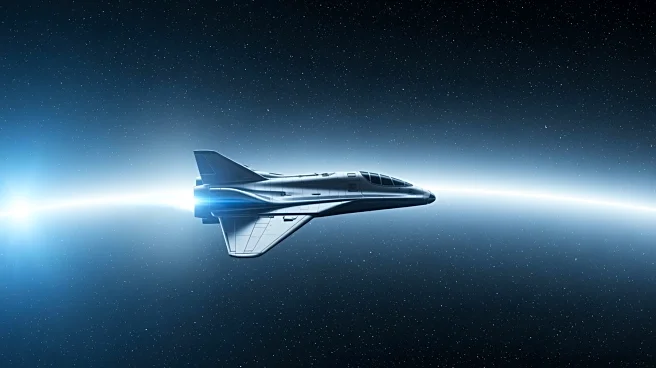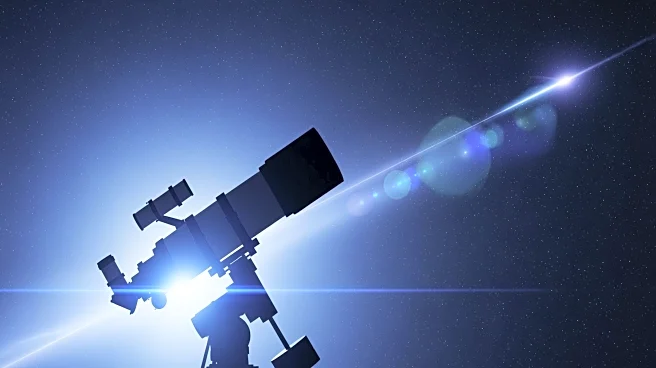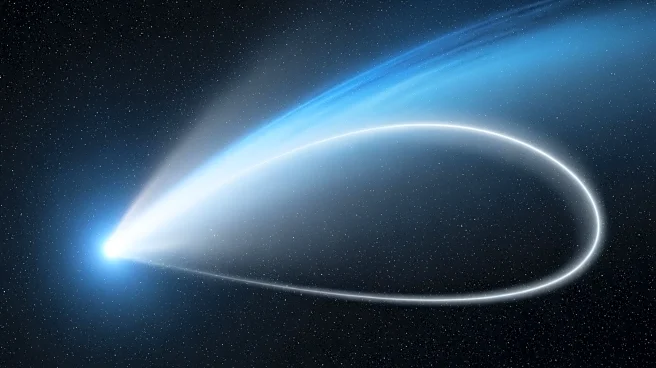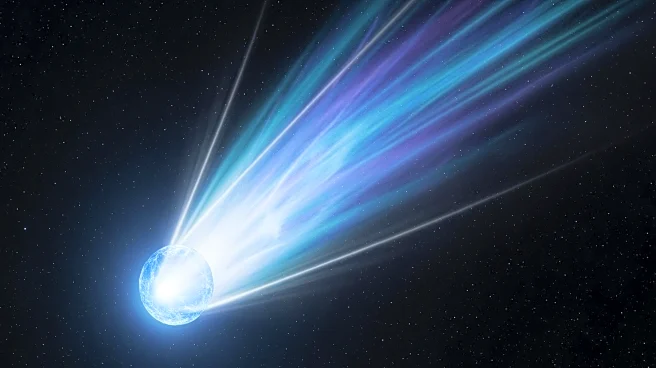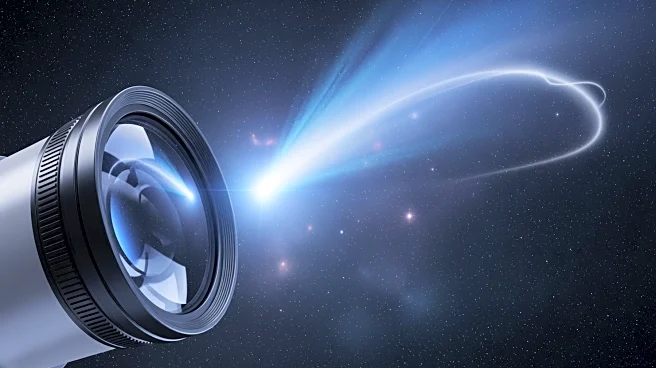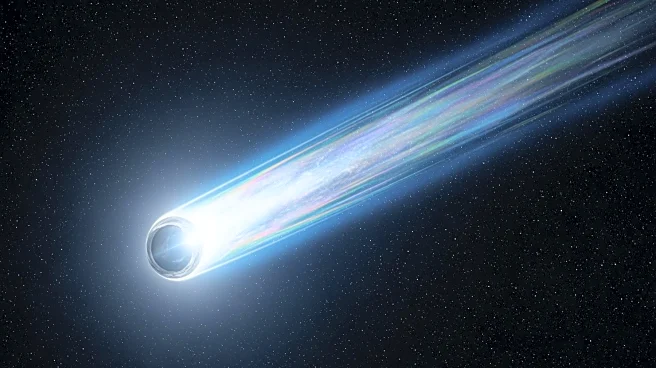What's Happening?
Harvard astronomer Avi Loeb has proposed that the interstellar object 3I/ATLAS, which recently reemerged from behind the Sun, may be using thrusters to accelerate its departure from the solar system. Observations
from the Nordic Optical Telescope show the object intact after its closest approach to the Sun, with a prominent 'anti-tail' pointing towards the Sun. Loeb suggests this could be evidence of technological thrusters, although most experts believe 3I/ATLAS is a natural comet. The object is expected to make its closest pass to Earth just before Christmas.
Why It's Important?
Loeb's hypothesis, if proven, could have profound implications for our understanding of extraterrestrial technology and the presence of alien civilizations. While the scientific community remains skeptical, the possibility of 3I/ATLAS being an alien spacecraft challenges existing paradigms and encourages further investigation into interstellar objects. The debate highlights the importance of maintaining an open mind in scientific inquiry, as new discoveries can reshape our understanding of the universe.
What's Next?
Further observations and analyses are expected in the coming weeks, which may provide more clarity on the nature of 3I/ATLAS. The scientific community will continue to monitor the object as it approaches Earth, with hopes of gathering more data to confirm or refute Loeb's theory. The ongoing discussion may lead to advancements in detection technologies and methodologies for studying interstellar phenomena.
Beyond the Headlines
Loeb's theory raises ethical and philosophical questions about humanity's readiness to encounter extraterrestrial technology. It also underscores the need for international collaboration in space exploration and the development of protocols for potential contact with alien civilizations. The event could inspire renewed interest in space research and funding for projects aimed at understanding interstellar objects.


